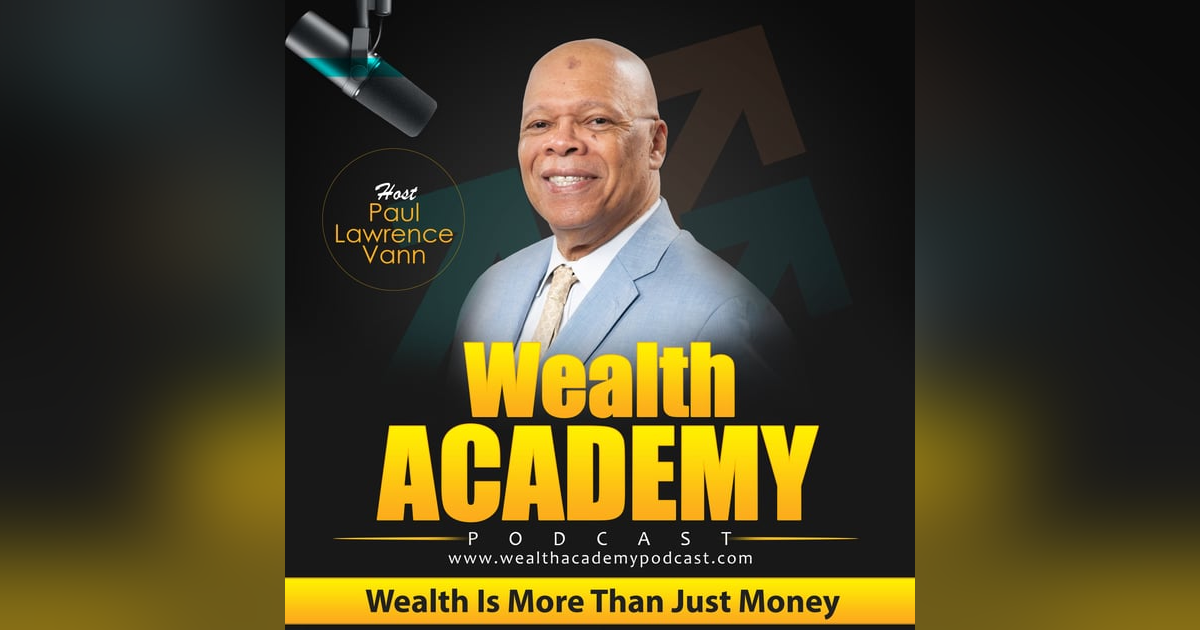215 National Financial Literacy Month - Day 8 - The Pillars of Personal Finance


During this episode of Wealth Academy Podcast, Paul provides insight into the pillars of personal finance. There is all manner of pillars in life including pillars of success, leadership, and personal finance, discover more on day 8 of National Financial Literacy Month.
When it comes to pillars it is defined as firm upright support for a superstructure, for the purposes of this episode it is personal finance. Everyone has four basic components in their financial structure: assets, debts, income, and expenses.
Measuring and comparing these can help you determine the state of your finances and your current net worth. You can think of them as the vital signs of your financial circumstances. When they are all in balance and working for you, your vitals are strong. When things get off-kilter, like your liabilities being off the charts, your finances may need some CPR to set them right.
So let us delve into the four pillars of personal finance.
Assets:
Assets are items that you own and that have value that can be turned into cash when needed. Assets include cash in your personal checking or savings account, whole life insurance policies, 401k’s, investments, land, equity in your home, valuable jewelry, and even antique fine china. The key to an asset is its ability to be converted to liquid cash within a short period of time. Your vinyl record collection may be the envy of all your friends, but if you cannot convert it to liquid cash when you need it, then it cannot be considered an asset.
Debts:
Debts are the accounting opposite of assets and include all accounts payable. Things like your mortgage, student loans, car loans, credit card balances, taxes owed, bills due, and money you owe others for services are all considered liabilities. In addition, accrued interest and principal on mortgages and other loans are liabilities as well. Remember, interest rates are an indicator of the cost of carrying debt, and tend to be negatively correlated with one’s credit score: the lower the credit score, the higher the interest rate.
Income:
Income is all the money you generate. It also includes interest and dividends you make on your investments. Tax refunds also qualify as income. For those under age 65, take-home pay usually constitutes the majority of income. Retirees and those over 65 gain most of their income from investments, Social Security, or pensions. When taking stock of your income, be sure to include benefits that reduce your expenses, such as employer-provided health insurance, or that increase your assets, such as 401K programs.
Expenses:
Expenses, or outflow, is all the money you spend. To gain an accurate total of expenses, it is important to establish a budget and to keep track of every penny spent. Keeping track of expenses is more challenging than keeping up with income because of the sheer number of different expenses.
If you have made an assessment of your pillars of finance, assets, liabilities, income, and expenses, what are your financial vital signs? Are you in a good space from a pillar of personal finance perspective and are you ready for valuable guidance on saving and investing for your future? Or are things looking a little rocky and in need of some help increasing assets, decreasing liabilities, and getting your income and expenses in better balance? Whatever space you happen to be in at this time, know that we are all a work in process.
Learn about Paul Lawrence Vann's virtual Financial Fitness course, it is being offered at a 50% discount throughout the month of April, National Financial Literacy Month, here is the link: https://bit.ly/3dbperG
Support this podcast at — https://redcircle.com/wealth-academy-podcast-wealth-is-more-than-just-money/donations




